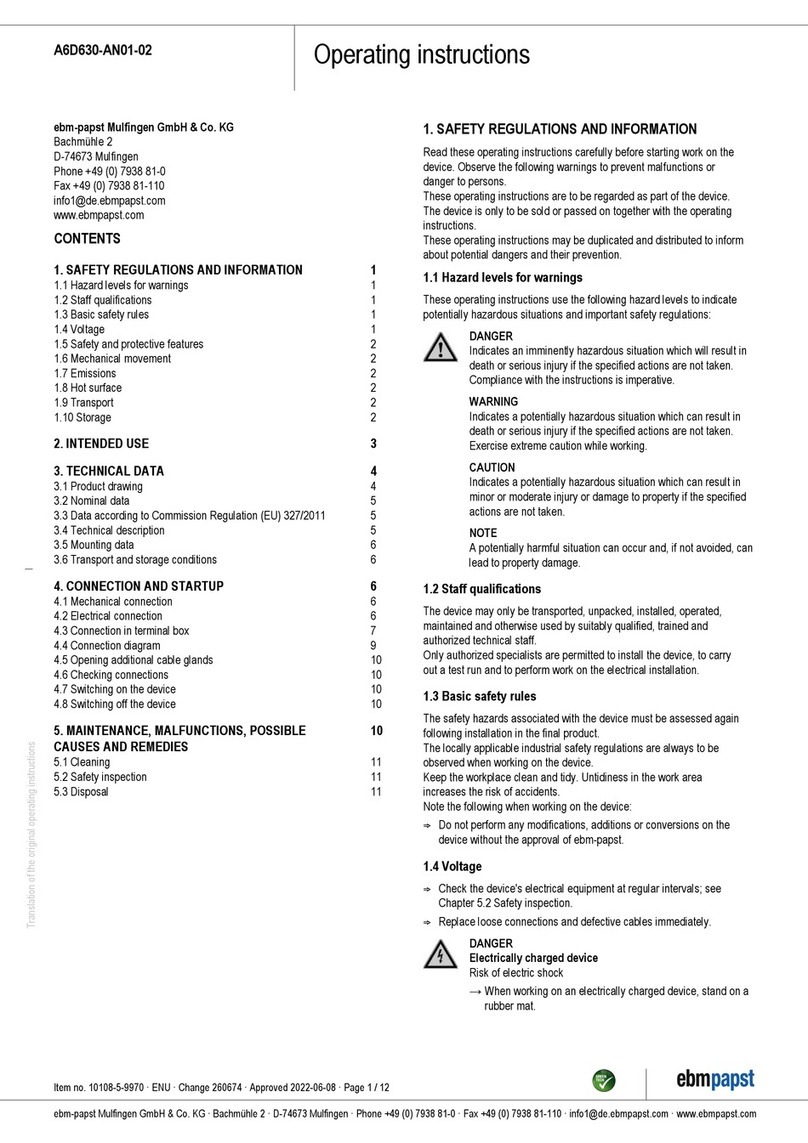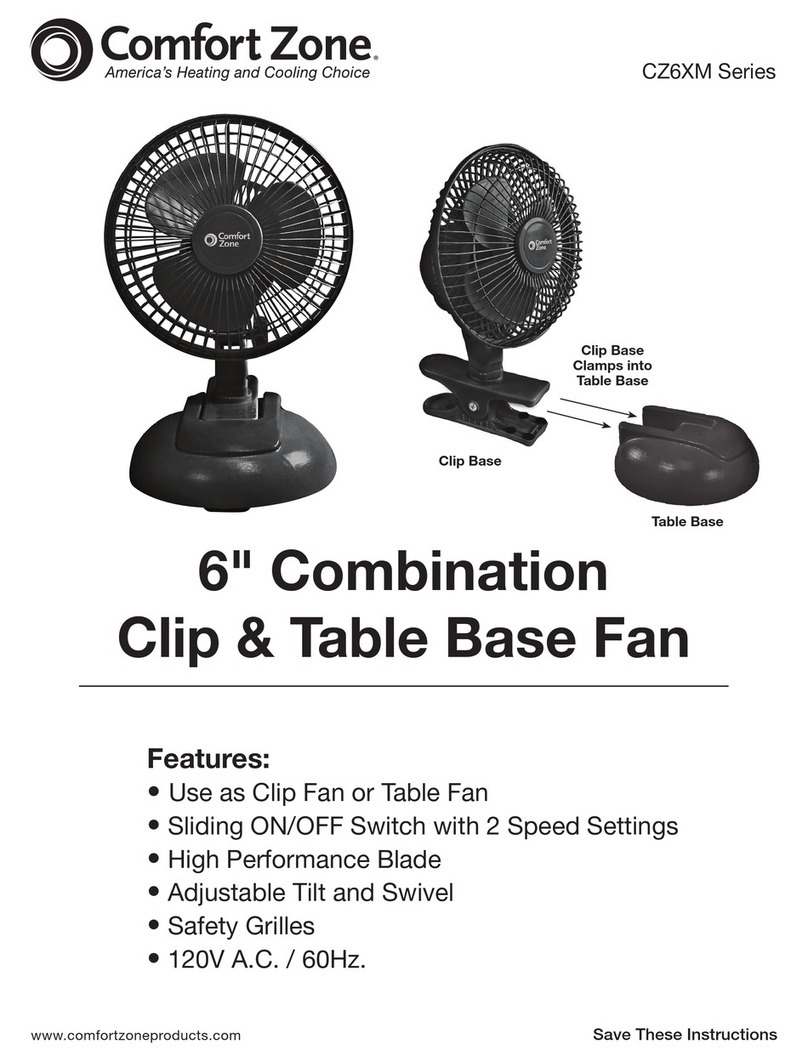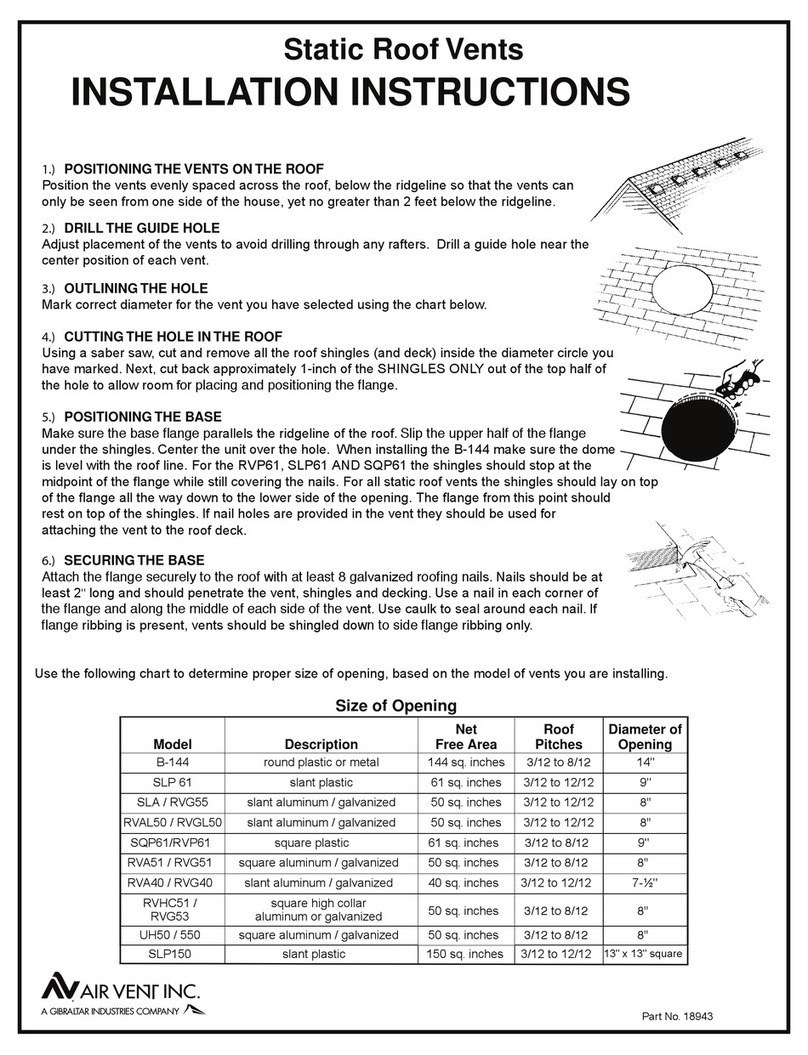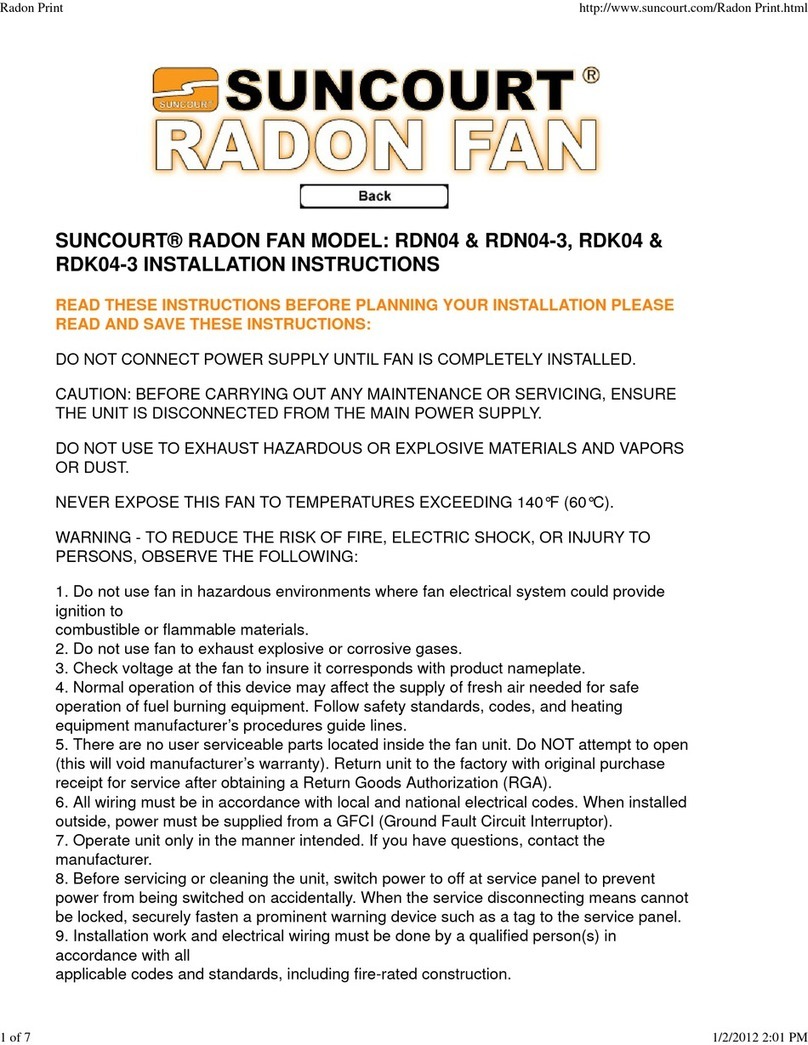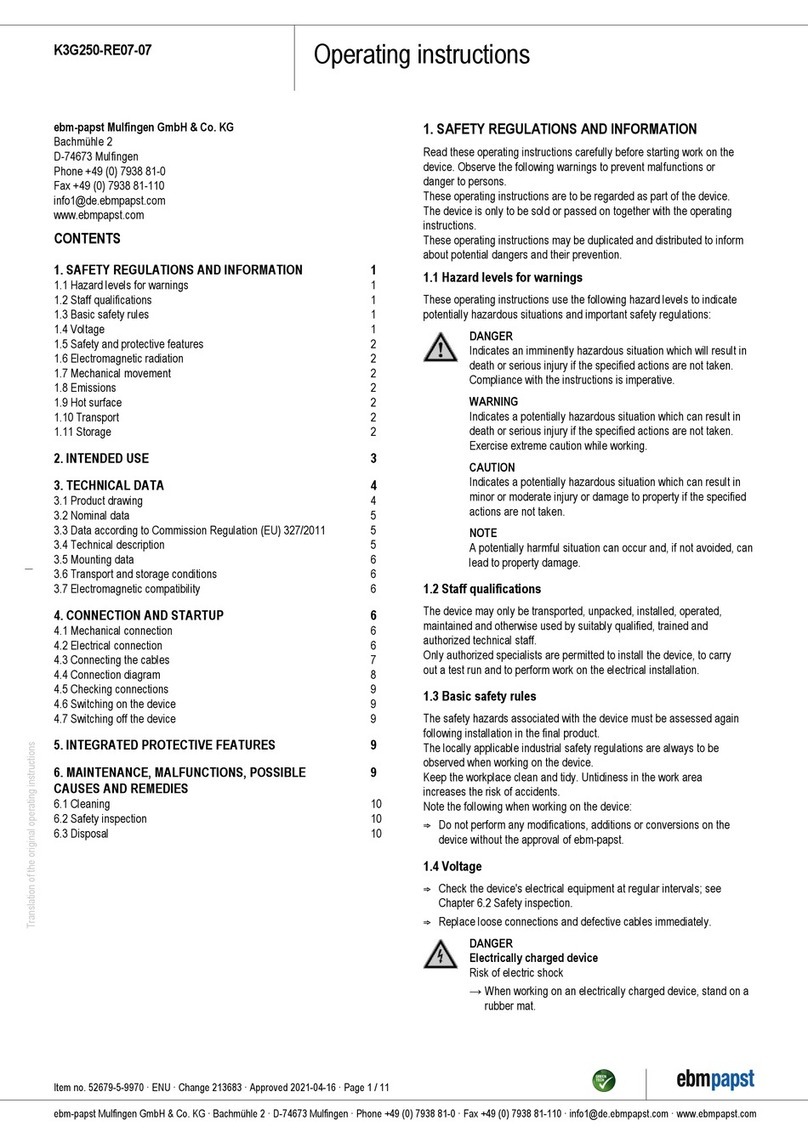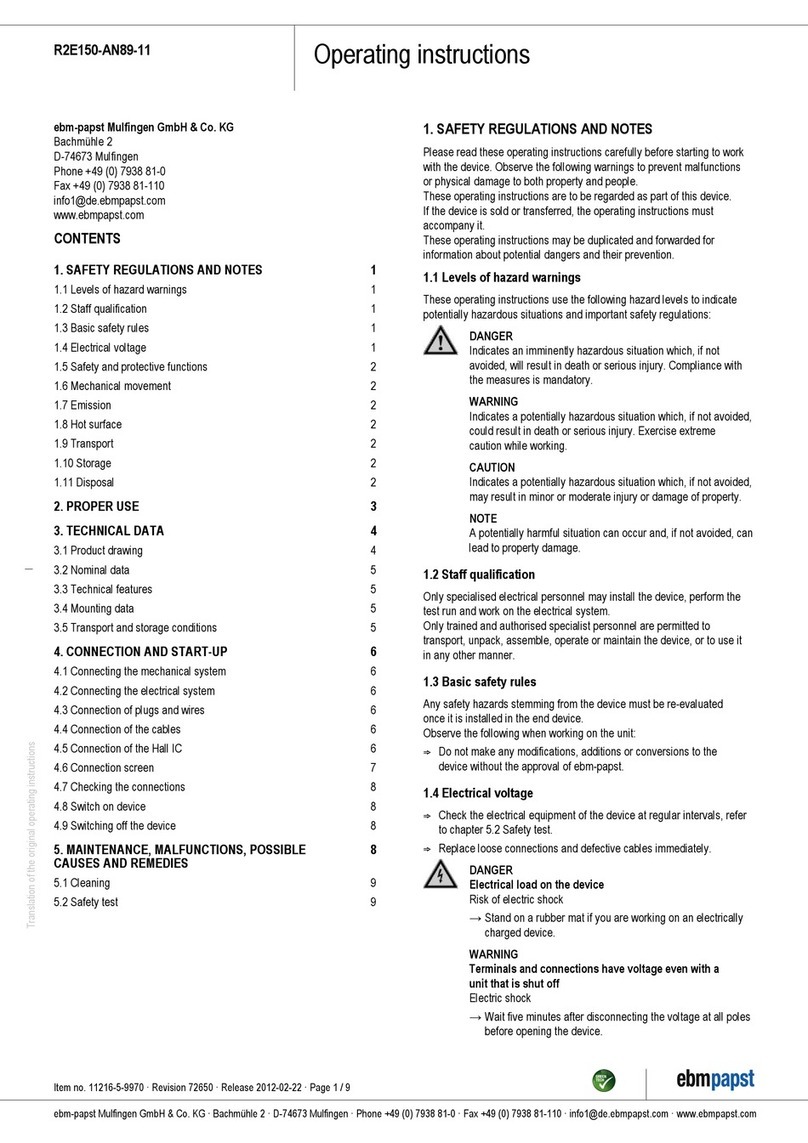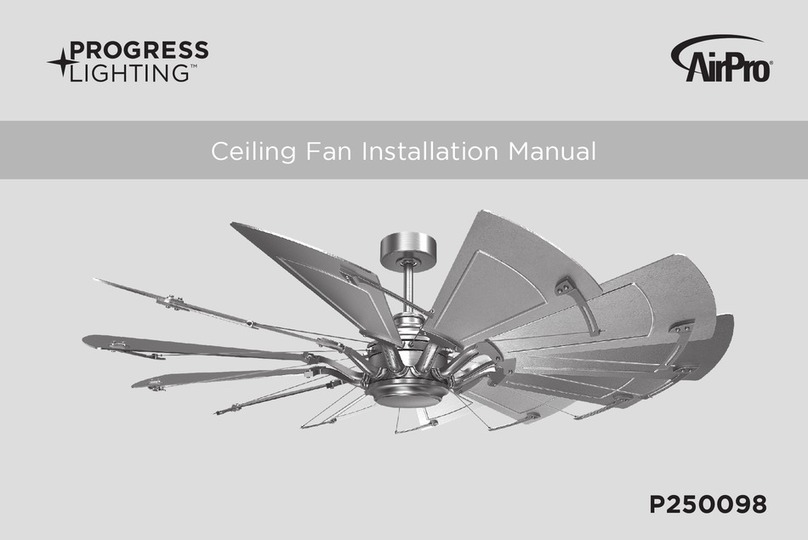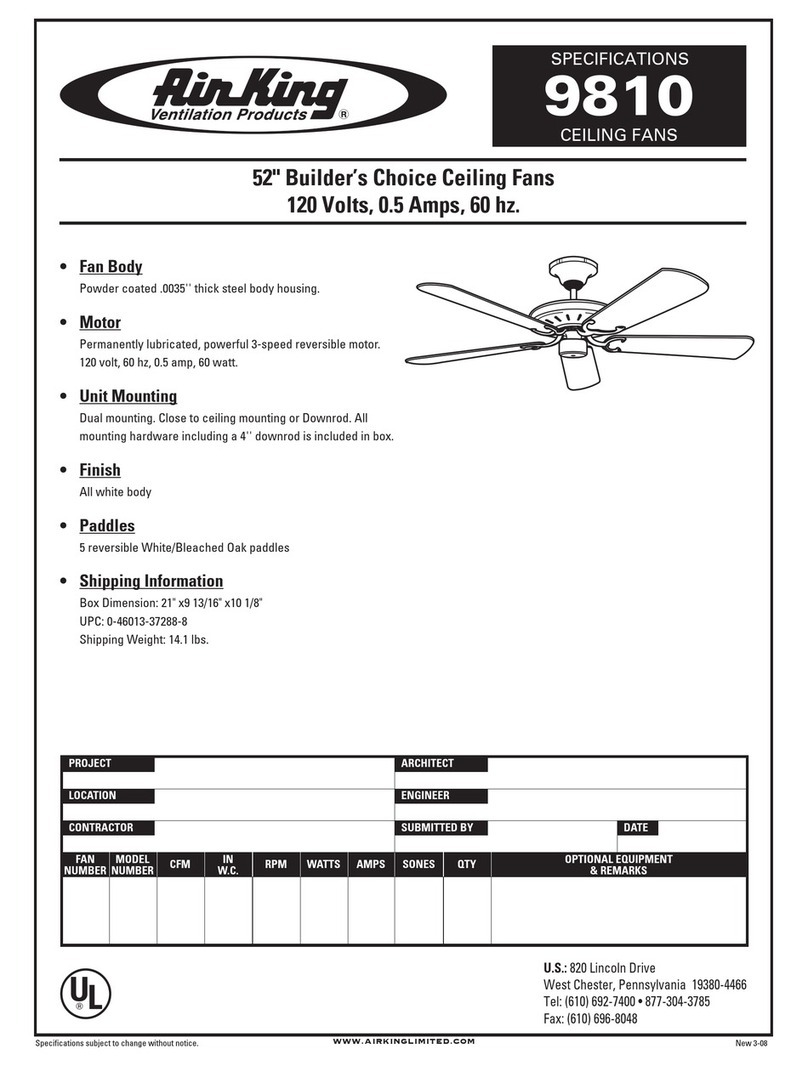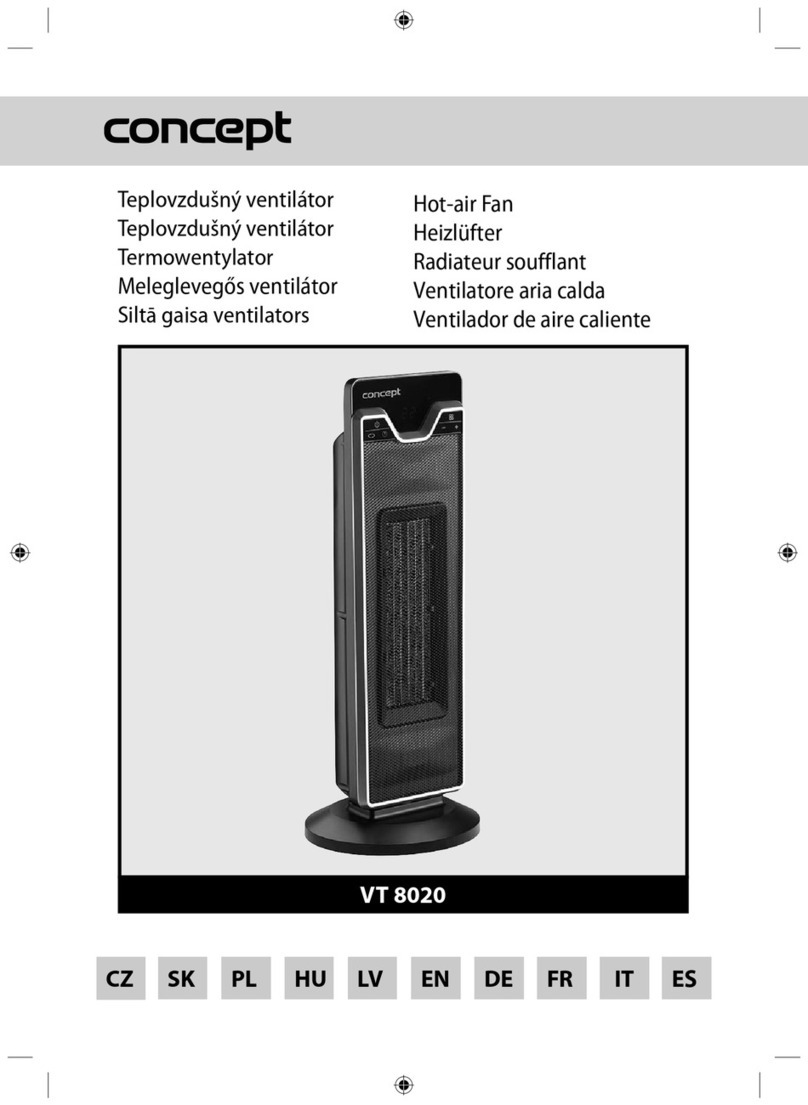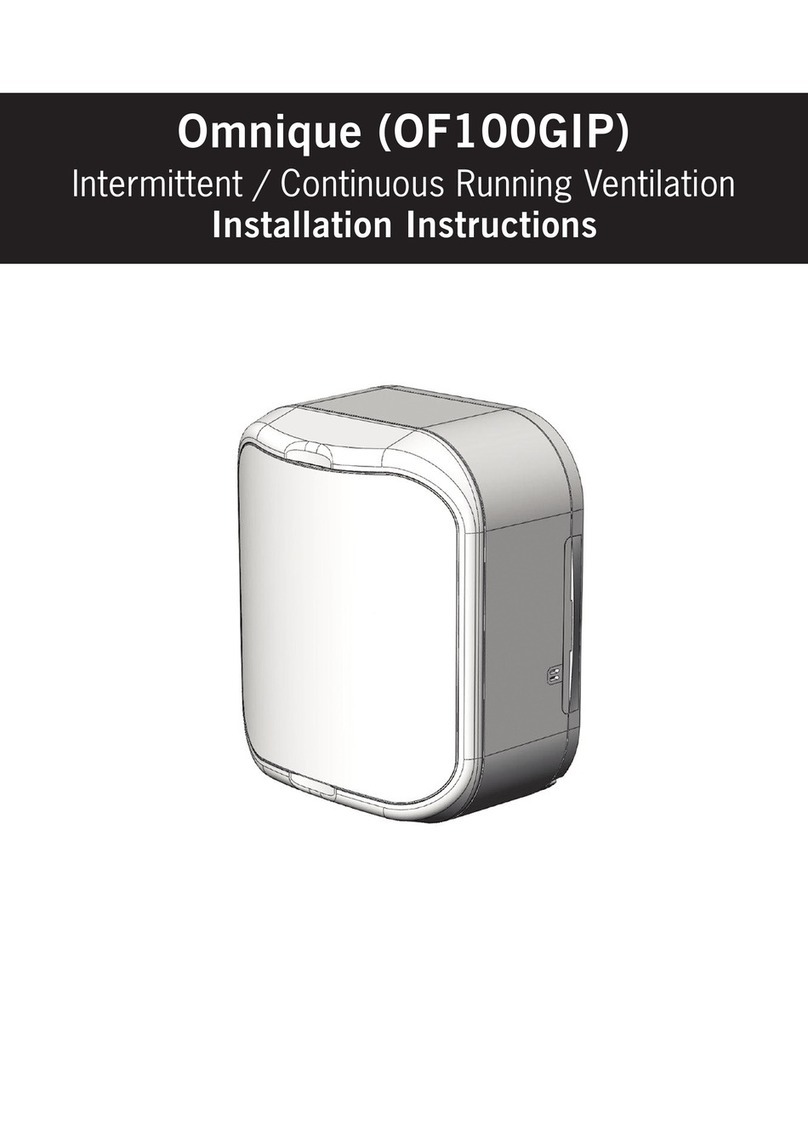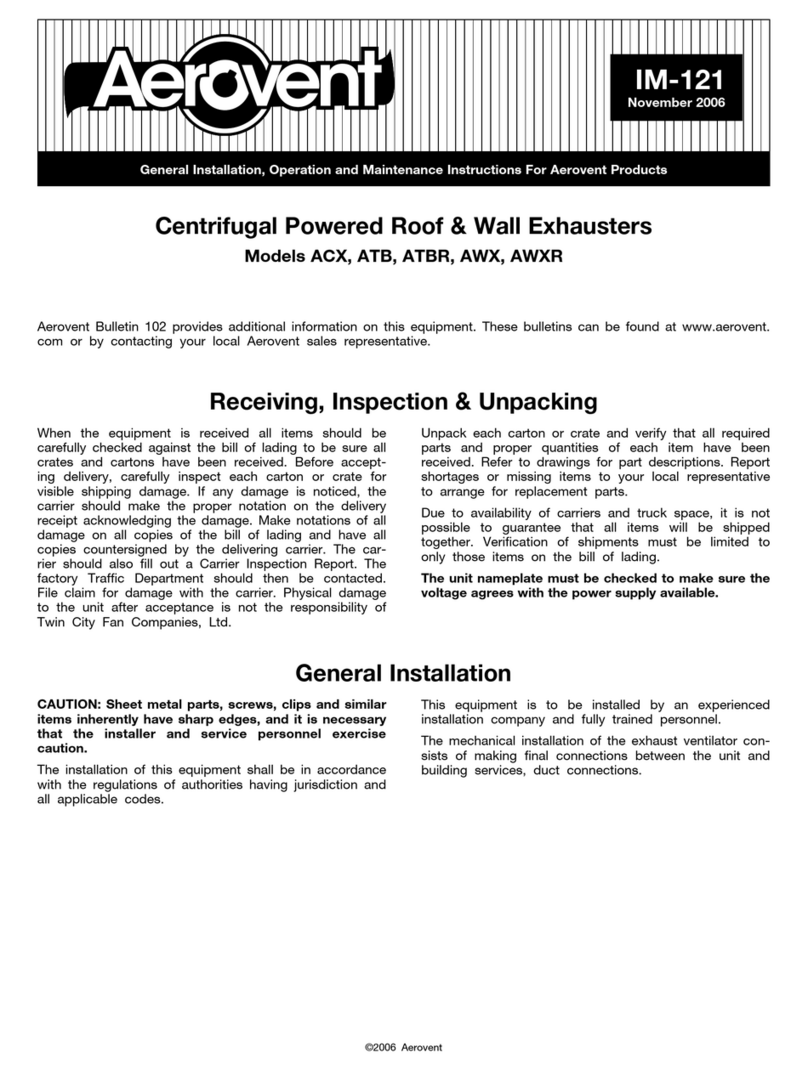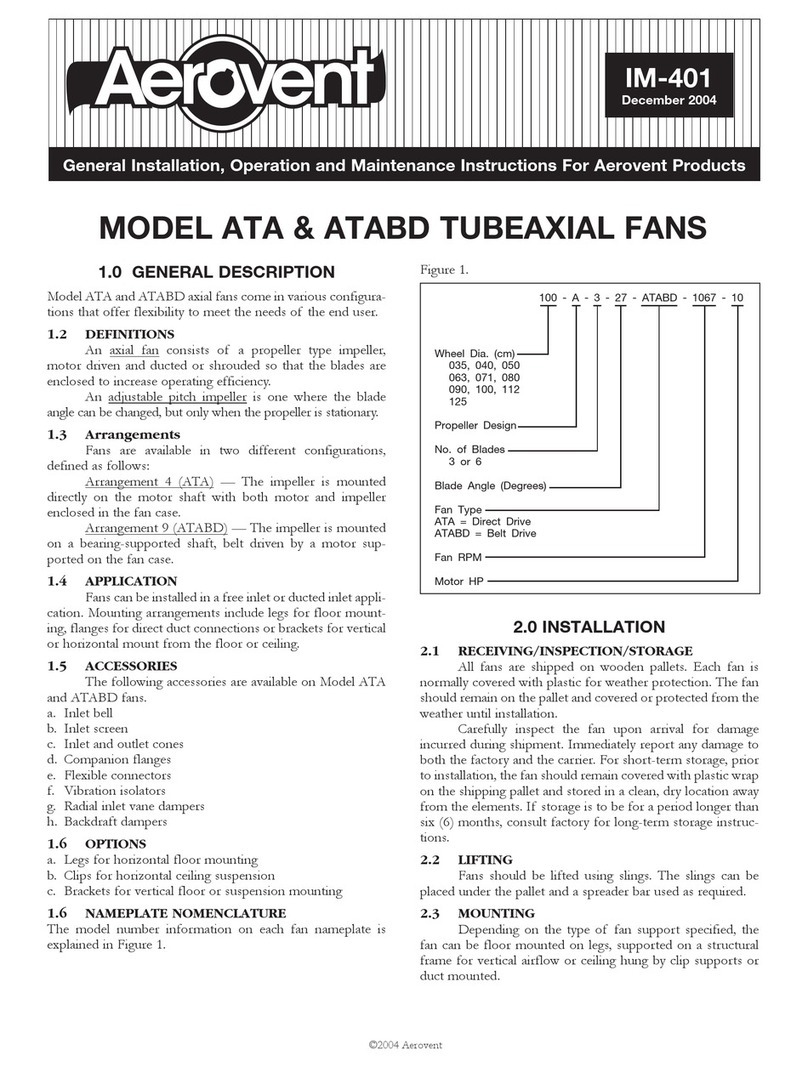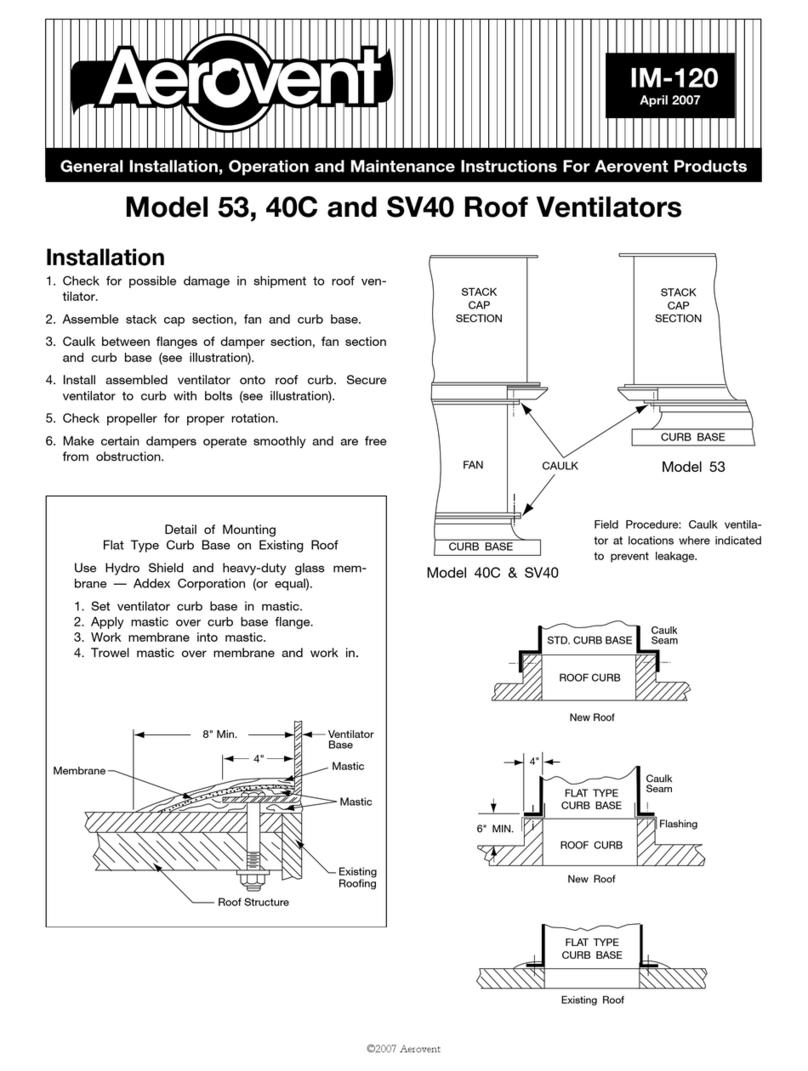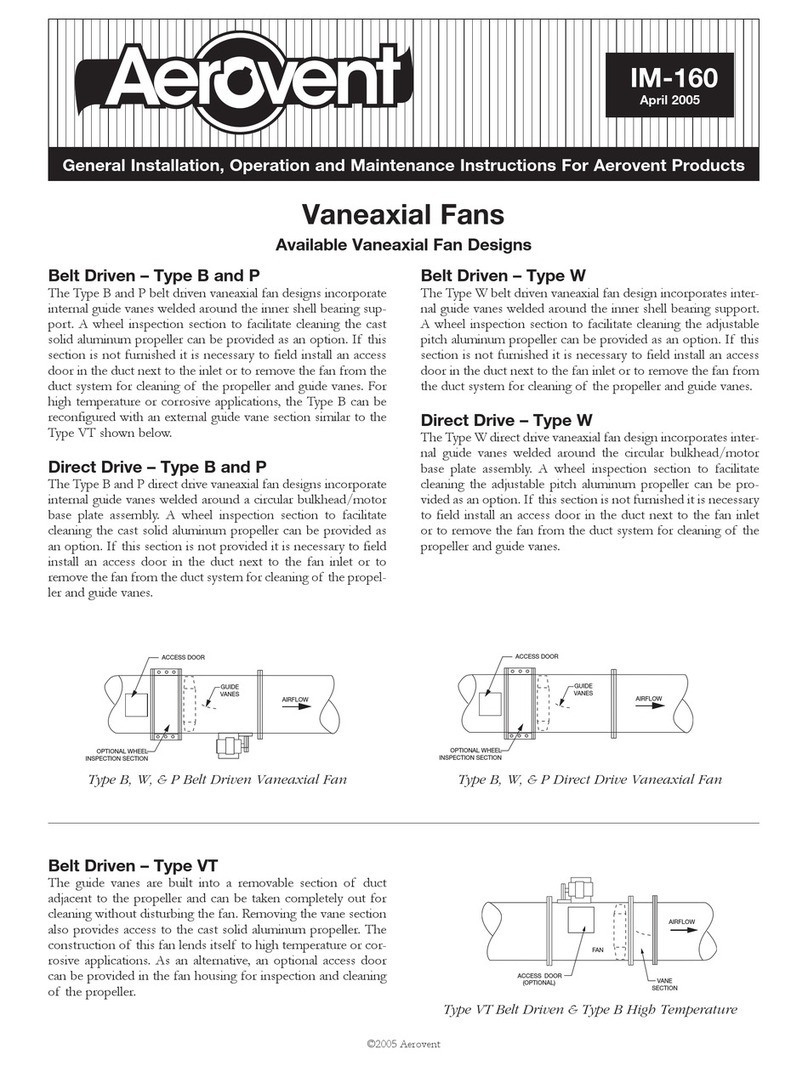
breakdown of the grease. The lubrication sticker identifies
a list of acceptable lubricants. All bearings are filled with
a lithium-based grease before leaving the factory. When
the fans are started, the bearings may discharge excess
grease through the seals for a short period of time.
Do not replace the initial discharge because leakage
will cease when the excess grease has worked out.
Sometimes the bearings have a tendency to run hotter
during this period. There is no reason for alarm unless it
lasts over 48 hours or gets very hot (over 200°F). When
relubricating, use a sufficient amount of grease to purge
the seals. Rotate bearings by hand during relubrication.
DRIVE MAINTENANCE AND INSTALLATION
V-belt drives need periodic inspection, retensioning and
occasional belt replacement. When inspecting drives,
look for dirt buildup, burrs or obstructions that can
cause premature belt or drive replacement. If burrs
are found, use fine emery cloth or a stone to remove
them. Be careful that dust does not enter the bearings.
Check sheaves for wear. Excessive slippage of belts on
sheaves can cause wear and vibration. Replace worn
sheaves with new ones. Carefully align sheaves to avoid
premature sheave failure. Inspect the belts for wear. If
fraying or other wear is observed to be mostly on one
side of the belts, the drives may be misaligned. Reinstall
the drives according to the following instructions:
1. Slip (do not pound) proper sheave onto corresponding
shaft.
2. Align sheaves with straightedge extended along
sheaves, just making contact in two places on outside
perimeters of both sheaves.
3. Tighten sheave bolts (or setscrews if appropriate).
Table 1 can be used to determine the amount of
torque required.
4. Install a matched set of belts. Adjust the motor position
to obtain slack, install and tighten belts. Using a pry
bar will damage belts.
5. Tighten belts to proper belt tension. Ideal tension is
just enough so that the belts do not slip under peak
load. When using drive tensioning data supplied by
V-belt drive manufacturers, new belts can be tensioned
to a value 50% greater than for normal operation. This
will reduce retensioning requirements after break-in.
Recheck sheave alignment after tensioning.
6. After initial installation of belts, recheck belt tension
again after a few days. (New belts require a break-in
period of operation.)
7. When replacing belts, replace the entire set. After
initial replacement and tensioning, recheck belt tension
after a few days. (New belts require a break-in period
of operation.) Never use belt dressing on any belts.
8. Fans that have motors and drives mounted at the
factory are trim balanced prior to shipment. This is not
possible on units that are shipped without motors and
drives. The addition of drive components in the field
can create unbalance forces. Aerovent recommends
final balancing of the unit after the drive components
are installed. Failure to do so may void the warranty.
TROUBLESHOOTING GUIDELINES
Use current safety practices when investigating fan or
system performance problems. General safe practices
and performance troubleshooting guidelines can be found
in AMCA Publications 410 and 202, respectively. Fan
application and field measurement procedures can be
found in AMCA Publications 201 and 203.
TROUBLESHOOTING PERFORMANCE
PROBLEMS
The lists below indicate possible areas to check when
air or sound values do not match expectations. Most fan
problems can be pinpointed to one of these common
causes.
Air Capacity Problems:
1. Resistance of system not at design rating. If resistance
is lower than expected, both airflow and horsepower
may be up. If resistance is higher than anticipated, air
volume will be down.
2. Fan speed is not at design speed.
3. Air density not at design values. Also check air
performance measurement techniques/procedures.
4. Devices for air modulation are closed or plugged. Also
check filters.
5. Wheel mounted improperly or is rotating in reverse.
6. Parts of system or fan have been damaged or need
cleaning.
Noise Problems:
1. Air performance is incorrect and fan is not at design
point of operation. Fan forced to operate in an unstable
flow region.
2. Bearing failure. Check bearings (lubrication).
3. Supply voltage high or inconsistent supply frequency.
Adjustable frequency controllers can generate motor
noise.
4. Objects which are installed in a high velocity airstream
can generate noise. This includes flow sensors, turning
vanes, etc.
5. Poor fan inlet conditions.
6. Acoustics or sound measurement procedure incorrect.
Condition
Fan
Application
Category
Rigidly Mounted
mm/s (in./s)
Flexibly Mounted
mm/s (in./s)
Start-up
BV-3 6.4 (0.25) 8.8 (0.35)
BV-4 4.1 (0.16) 6.4 (0.25)
Alarm
BV-3 10.2 (0.40) 16.5 (0.65)
BV-4 6.4 (0.25) 10.2 (0.40)
Shutdown
BV-3 12.7 (0.50) 17.8 (0.70)
BV-4 10.2 (0.40) 15.2 (0.60)
Figure 8. Vibration Guidelines, unfiltered
Value shown are peak velocity, mm/s (inches/s), Filter out.
Table taken from ANSI/AMCA Standard 204-05, Table 6.3.
AMCA defines BV-3 for applications up to 400 HP; BV-4 for applications
over 400 HP.
Placing fan sheave on motor can overspeed wheel
and cause structural failure.
CAUTION
All fans manufactured by Aerovent are factory
balanced prior to shipment. Installation variables,
handling and movement of the fan during shipment
may cause the rotating assembly to shift. Balance
should be checked once the fan is installed. If a
final trim balance is required, it is the end user's
responsibility to bring the fan back to factory
specifications. Final trim balancing is not the
responsibility of Aerovent. Refer to Figure 8 for
vibration guidelines.
NOTICE
6 Aerovent Installation and Maintenance Manual IM-391








